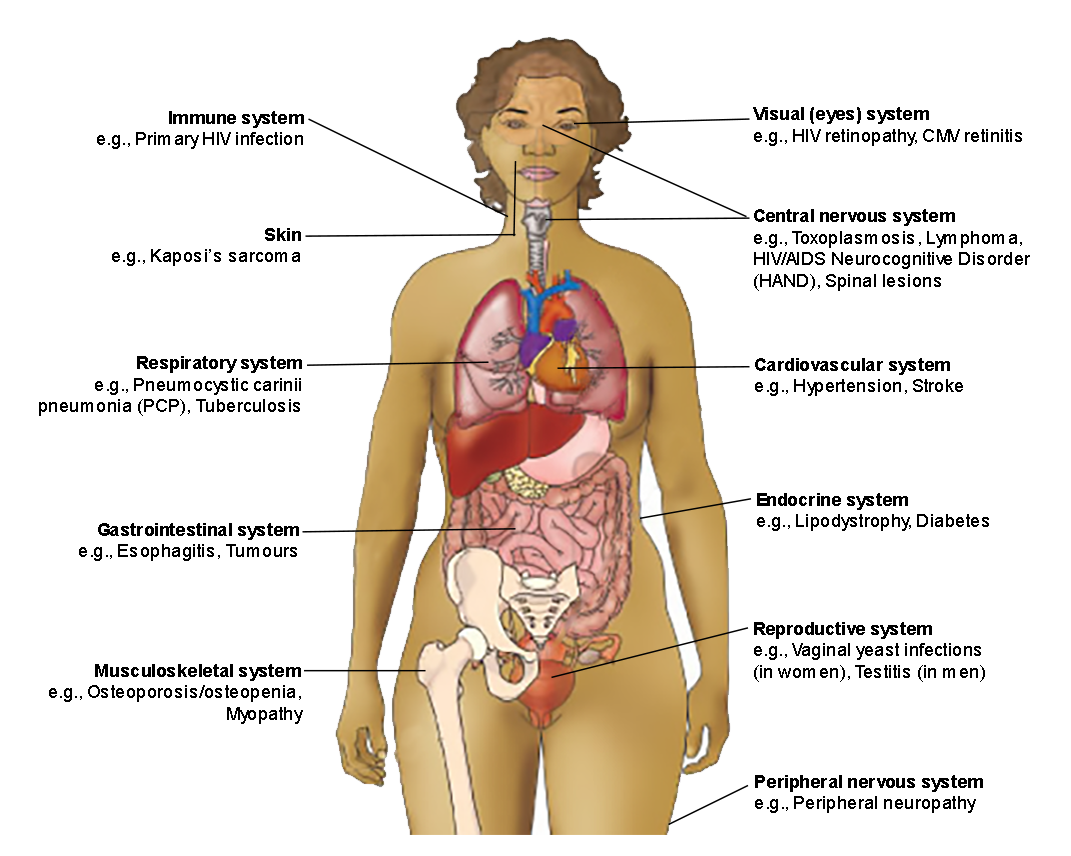HIV is a complex and multi-system disease that causes a range of conditions that can affect almost every single body system. However, antiretroviral therapy has contributed to HIV-positive people living longer and having better quality of life.
Despite these improvements, Van As et al.1 found that physical impairments, activity limitations and participation restrictions have had a negative effect on people living with HIV. They highlighted the need for rehabilitation providers to have detailed knowledge of the effects of HIV on the patient so that appropriate interventions can be made. They recommend the International Classification of Functioning, Disability and Health (ICF),2 developed by the World Health Organization, as a useful framework for evaluating impairments and life-related challenges resulting from HIV and HIV-related conditions (visit Section 3 to learn more about HIV-related disability).
Figure 2.3: Examples of diagnoses affecting different body systems in people living with HIV

Figure 2.3 Examples of diagnoses affecting different body systems in people living with HIV – Description.
This diagram illustrates the different body systems that are affected by HIV. These include:
- The immune system (e.g., primary HIV infection)
- The visual (eyes) system (e.g., HIV retinopathy, CMV retinitis)
- Skin (e.g. Kaposi’s sarcoma)
- The central nervous system (e.g., Toxoplamosis, Lymphoma, HIV/AIDS Neurocognitive Disorder (HAND), Spinal lesions
- The respiratory system (e.g., pneumocystic carinii pneumonia (PCP), tuberculosis
- The cardiovascular system (e.g., hypertension, stroke)
- The gastrointestinal system (e.g., esophagitis, tumours)
- The endocrine system (e.g., lipodystropy, diabetes)
- The musculoskeletal system (e.g., osteoporosis/osteopenia, myopathy)
- The reproductive system (e.g., vaginal yeast infections (in women), testitis (in men)
- The peripheral nervous system (e.g., peripheral neuropathy).
1 Van As M, Myezwa H, Stewart A, Maleka D, Musenge E. The International Classification of Function Disability and Health (ICF) in adults visiting the HIV outpatient clinic at a regional hospital in Johannesburg, South Africa. AIDS Care. 2009;21(1):50-8. PubMed PMID: 19085220.
2 World Health Organization. International Classification of Functioning Disability and Health (ICF) – Geneva. 2011.